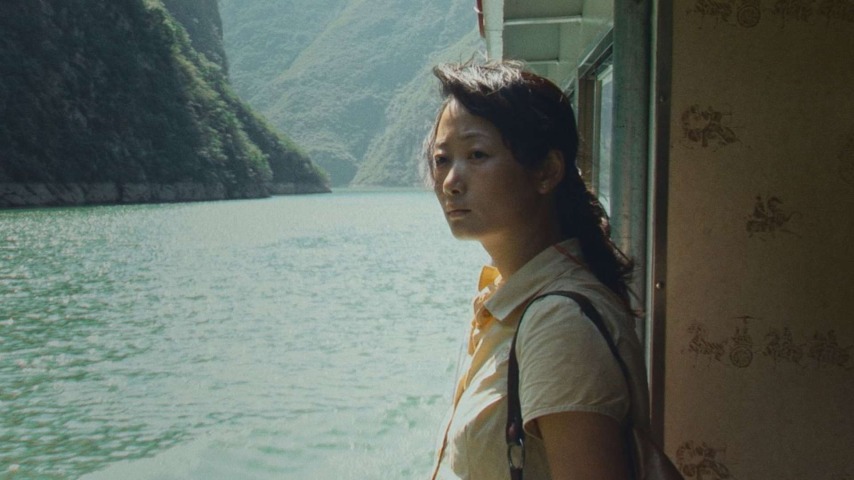Jia Zhangke reconfigures his past films into poignant collage in Caught By The Tides
A strange yet moving hybrid of outtakes, behind-the-scenes moments, and new footage.
Photo: Sideshow and Janus Films
Chinese writer-director Jia Zhangke emerged on the international scene at the beginning of the century as a chronicler of China’s uncertain present. Platform, his first masterpiece, followed a small-town performing arts troupe in his home province of Shanxi in the years after the Cultural Revolution. The World was set around a Beijing theme park where guests come to see scale models of foreign landmarks like the Eiffel Tower and the Taj Mahal. Still Life told connected stories about two people who come to look for their missing spouses in a small town that is being flooded by the Three Gorges Dam. Each film was a lyrical microcosm of social changes and contradictions, landscapes and unspoken longings, subtleties and absurdities, generational questions and millennial anxieties. But more broadly, they were about the more or less universal, poetically interchangeable subjects of distance and time, with their attendant rhymes, disappointments, and ironies.
Now well into middle age, with the backdrops of his own breakthrough films fading into China’s past, Jia has, perhaps unsurprisingly, made this into an increasingly self-reflexive theme. He has, at least in this respect, never completely left the late 1990s and early 2000s, re-conjuring the period in post-millennial features like Mountains May Depart and Ash Is Purest White (both of which tell stories set over multiple decades), the ennui replaced by a mix of melancholy and nostalgia. Caught By The Tides, which is his first narrative feature in seven years, turns out to be his most idiosyncratic variation to date on this idea: a strange hybrid fashioned out of footage and outtakes from Jia’s own films (mostly Still Life and his third feature, Unknown Pleasures), decades-old documentary video, and newly shot scenes.
It is, of course, not unusual for master filmmakers of a certain age to rework their earlier material or revisit their greatest hits. But what Jia is doing here—combining and reinterpreting scenes from different movies that starred the same actors as unrelated characters into a single overarching plot—is, in its own unassuming ways, an unprecedented experiment in collage. Given that much of the footage that makes up Caught By The Tides was intended for other projects, one might even call it an unconscious production, born of the long-running currents and repetitions of its director’s three-decade-plus career, its story a dreamlike reconfiguration of earlier Jia plots.
It goes without saying that much of it will feel familiar to those already well-versed in the Jia filmography: there’s a yearning, a search, and, finally, a return. Like so many of his films, Caught By The Tides is broken up into parts, beginning in Datong, a coal-mining city in the northern corner of Shanxi that was the setting of Unknown Pleasures. A lot of this elliptical first section consists of his own video footage from the early 2000s, a document of the turn of the century in standard-def. Young people carouse and dance at cheesy nightclubs to inane Europop while baggy-eyed retirees in identical jackets and caps congregate at a decrepit miners’ hall to hear local women warble opera under a decaying portrait of Chairman Mao and a sign that promises “A Taste of the World’s Beauty.”
